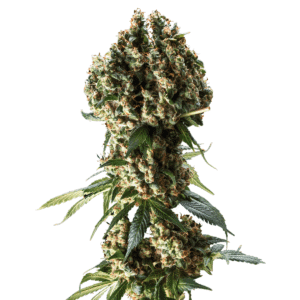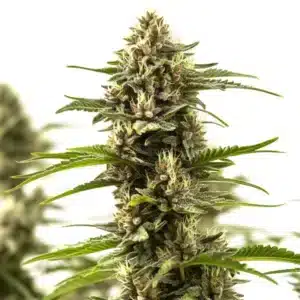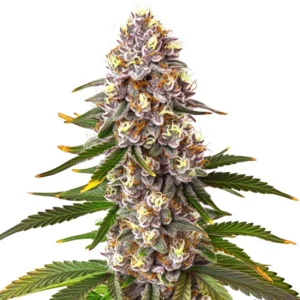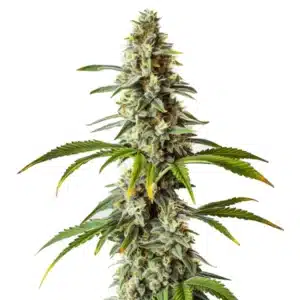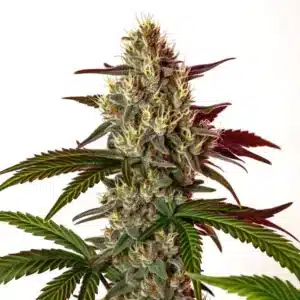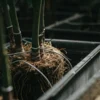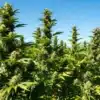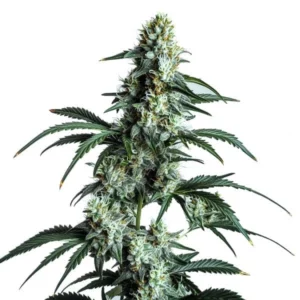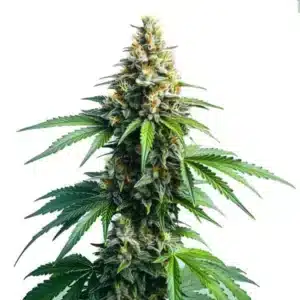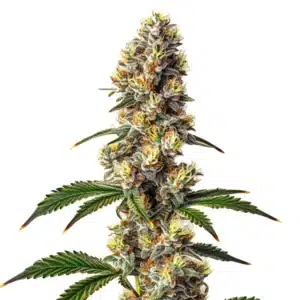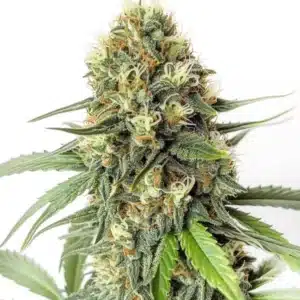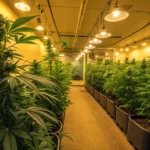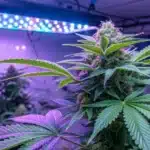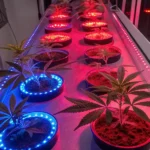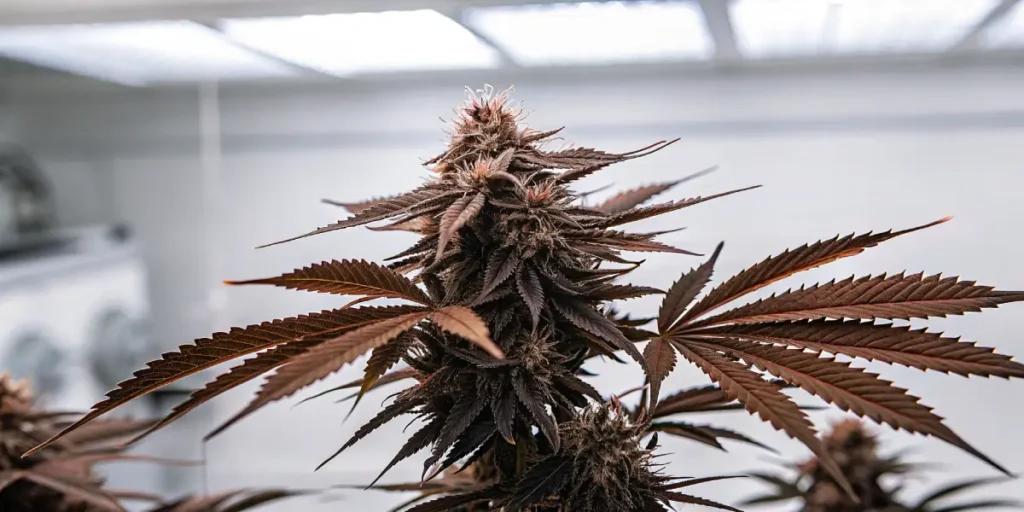
Cannabis and Blue Light: Effects on Growth
Cannabis and Blue Light: Effects on Growth are crucial to understand for any cultivator. Blue light plays a pivotal role in how cannabis plants develop, impacting various growth stages and influencing overall plant health. For both newcomers and seasoned growers, using blue light effectively can make a significant difference in yield and quality.
When considering cannabis growth under the blue light spectrum, it’s important to note how this light affects plant morphology. Blue light tends to encourage shorter, bushier plants. This is particularly useful if you’re working with limited space.
Recommended Strains
Granddaddy Purple
|
|
THC | 25% (High) |
|
|
Type | Feminized |
|
|
Yield | Medium |
|
|
Phenotype | 70% Indica / 30% Sativa |
Super Lemon Haze
|
|
THC | 19% (Medium) |
|
|
Type | Feminized |
|
|
Yield | High |
|
|
Phenotype | 20% Indica / 80% Sativa |
Blue light benefits for cannabis cultivation extend beyond just physical appearance. It also enhances the production of essential oils and cannabinoids, leading to a more potent harvest. Thus, utilizing blue light strategically can elevate the quality of your yield.
Cannabis Growth Under Blue Light Spectrum
The blue light spectrum ranges from 400 to 500 nanometers. This range is crucial for photosynthesis, aiding in the development of strong stems and healthy leaves. Many growers find that a higher ratio of blue light during the vegetative stage results in robust plants. Studies on Cannabis and Blue Light: Effects on Growth show that proper exposure enhances structure, improves leaf density, and supports overall plant health.
For beginners, it might be daunting to measure light spectrums. However, many LED grow lights are designed to provide the optimal blue light spectrum for cannabis. These lights often come with adjustable settings, allowing you to tailor the light conditions to your plant’s needs.
Knowing cannabis growth under blue light spectrum requires recognizing its role in the plant’s biological processes. Blue light influences chlorophyll production, which is essential for photosynthesis. This spectrum also helps in maintaining the plant’s structural integrity, ensuring that it can support the weight of its buds during the flowering phase.
Experienced growers often experiment with different blue light intensities to achieve specific growth outcomes. By tweaking the light settings, they can manipulate the plant’s height and bushiness, achieving a desirable shape that maximizes space and light exposure. This adaptability is one of the key blue light benefits for cannabis cultivation.
Effects of Blue Light on Cannabis Plant Development
Blue light affects cannabis plant development by influencing the opening of stomata. Stomata are tiny openings on leaves that allow gas exchange. When exposed to blue light, these openings maximize, improving the plant’s photosynthesis efficiency.
This light also impacts the plant’s circadian rhythms. By regulating these internal clocks, blue light helps synchronize growth and rest periods, ensuring your plants have a balanced life cycle. This synchronization is crucial for maximizing yield.
The effects of blue light on cannabis plant development are also evident in the plant’s nutrient uptake. Blue light encourages the absorption of key nutrients required for growth, leading to healthier and more vibrant plants. This uptake is essential for the development of dense, flavorful buds.
Moreover, the cannabis photosynthesis response to blue light is pivotal in optimizing energy conversion. By enhancing this process, blue light ensures that the plant efficiently utilizes available resources, resulting in a more productive and abundant harvest. This relationship highlights the importance of Cannabis and Blue Light: Effects on Growth, as understanding it helps both small-scale and commercial growers maximize yield and overall plant health.
Promos & Deals
Practical Tips for Using Blue Light
When implementing blue light in your grow setup, start by focusing on the vegetative stage. This stage benefits most from blue light, ensuring your plants develop strong structural integrity.
Consider using LED lights that offer a full spectrum. These lights allow you to adjust the blue light intensity according to your plant’s requirements. It’s an efficient way to ensure your cannabis receives the right amount of blue light.
Incorporating blue light into your cultivation strategy involves understanding the unique needs of your cannabis plants. Regularly monitor their response to light adjustments, and be prepared to tweak the settings to optimize growth. Over time, you’ll discover the perfect balance that suits your specific strains and growing conditions.
Another practical tip is to combine blue light with other spectrums during different growth stages. While blue light is crucial during the vegetative phase, integrating red light during flowering can significantly enhance bud formation and resin production. This comprehensive approach is key to optimizing cannabis growth with blue light.
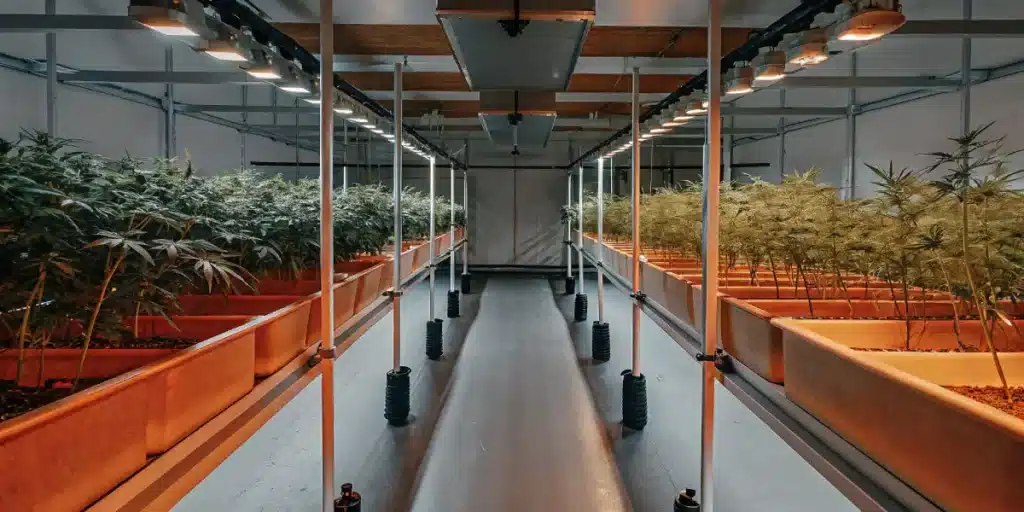
Recommended Strains for Blue Light Cultivation
Choosing the right cannabis strain can enhance the effects of blue light. “Blue Dream” from Blimburn Seeds is a popular choice for many growers. Its genetics are well-suited for blue light, resulting in a robust and resin-rich yield.
Another strain to consider is “Sour Diesel.” Known for its energetic effects and high THC levels, Sour Diesel thrives under blue light conditions. It benefits from the enhanced photosynthesis response to blue light, producing larger buds.
“Super Lemon Haze” is another excellent strain for blue light cultivation. This sativa-dominant hybrid responds well to the blue light spectrum, producing vibrant, citrusy buds with a high potency. Its growth structure also benefits from the bushier morphology encouraged by blue light.
For those seeking a balanced growth experience, “Granddaddy Purple” is a viable option. Known for its relaxing effects and rich terpene profile, this strain flourishes under blue light, resulting in aromatic and flavorful buds. It’s a great choice for growers looking to enhance both the quality and quantity of their harvest using blue light benefits for cannabis cultivation.
Optimizing Cannabis Growth with Blue Light
To optimize cannabis growth with blue light, integrate it with other light spectrums. A balanced approach ensures your plants receive comprehensive light exposure, mimicking natural sunlight. Understanding Cannabis and Blue Light: Effects on Growth helps growers see how this spectrum boosts vegetative development, stronger stems, and healthier leaves.
Use timers to establish a consistent light schedule. Consistency helps maintain your plant’s circadian rhythms, promoting steady growth. A standard cycle for vegetative growth is 18 hours of light followed by 6 hours of darkness.
Maximizing the effects of blue light requires attention to environmental factors. Ensure your growing space has adequate ventilation and temperature control, as these elements can influence the plant’s response to light. Maintaining a stable environment complements the benefits of blue light, leading to healthier plants.
Additionally, consider the use of reflective materials in your grow room. These materials can help distribute blue light evenly across your plants, ensuring each one receives ample exposure. This technique is particularly useful for growers using limited light sources, as it maximizes the efficiency of your setup.
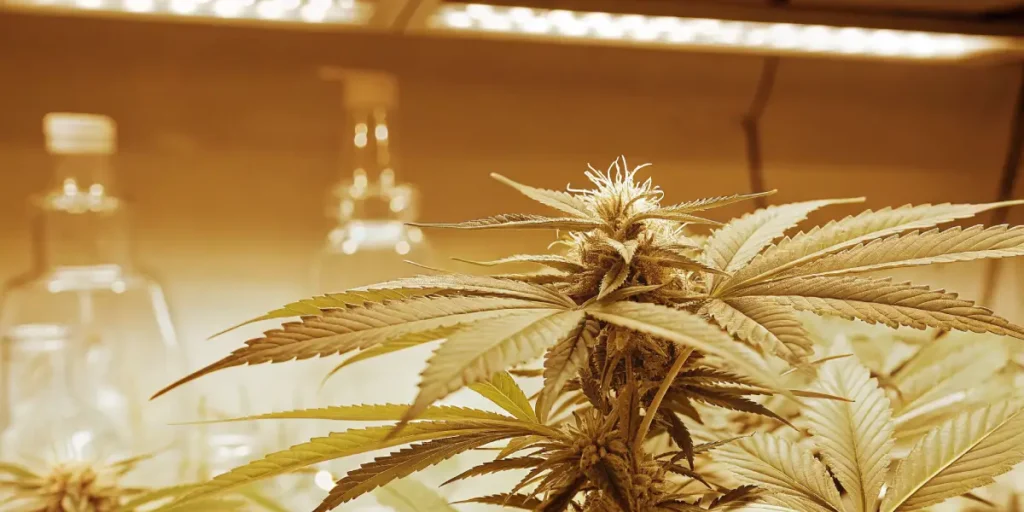
FAQs about Cannabis and Blue Light: Effects on Growth
How does blue light affect cannabis photosynthesis?
Blue light directly influences cannabis photosynthesis by increasing the efficiency of light absorption. This light spectrum enhances the plant’s ability to convert sunlight into energy, crucial for healthy growth.
By opening the stomata, blue light facilitates better gas exchange. This process allows the plant to absorb more carbon dioxide, essential for photosynthesis. The result is a more vigorous growth phase with stronger plants.
The function of blue light in cannabis photosynthesis response goes beyond mere energy conversion. It also affects the production of secondary metabolites, such as terpenes and cannabinoids, which are vital for the plant’s flavor and potency. This dual impact underscores the importance of blue light in cannabis cultivation.
Furthermore, blue light’s impact on photosynthesis is particularly pronounced in younger plants. During the early stages of growth, blue light helps establish a strong foundation for future development. This foundation is crucial for plants to withstand stress and produce high-quality buds.
What is the best blue light ratio for cannabis?
The ideal blue light ratio can vary depending on the growth stage. During the vegetative stage, a higher ratio of blue light is beneficial. Many growers aim for a spectrum with at least 20% blue light during this phase.
As plants transition to flowering, the ratio may be adjusted to include more red light. This shift helps stimulate flower production, leading to a bountiful harvest. Balancing blue and red light is key to optimizing growth.
Determining the best blue light ratio also involves considering the specific needs of your cannabis strain. Some strains may require a slightly higher or lower percentage of blue light during the vegetative phase. Keeping detailed records of your plants’ responses can guide future adjustments and improve overall yield.
Besides to adjusting the blue light ratio, it’s beneficial to experiment with the duration of light exposure. Some growers find that extending the light period during the vegetative stage can further boost growth. This experimentation can lead to a more tailored lighting strategy that maximizes the potential of your cannabis plants.
Can blue light alone support cannabis growth?
While blue light is essential, it should not be the sole light source for cannabis. A full-spectrum light setup is recommended. This approach ensures that plants receive all the wavelengths needed for complete development.
Combining blue light with red and other spectrums provides the best results. It mimics the natural light cycle, promoting both vegetative and flowering growth. This balance is crucial for achieving a high-quality yield.
Relying on blue light alone may limit the plant’s potential, as each light spectrum plays a unique role in development. Red light, for instance, is critical for flower production and enhancing the final yield. Thus, integrating multiple spectrums is essential for comprehensive plant growth.
Additionally, a diverse light spectrum can enhance the plant’s resilience to environmental stressors. By providing a balanced light environment, growers can ensure their plants are robust and capable of handling fluctuations in temperature and humidity, ultimately leading to a more successful harvest.
What are the benefits of using LED lights for blue light?
LED lights are a popular choice for providing blue light. They are energy-efficient, producing less heat compared to traditional grow lights. This efficiency allows you to maintain optimal temperatures for your plants.
Many LED lights offer adjustable spectrums, giving you control over the light your plants receive. This flexibility is ideal for tailoring growth conditions, ensuring your cannabis thrives under blue light.
Another significant advantage of LED lights is their longevity. Unlike traditional bulbs, LEDs have a longer lifespan, reducing the need for frequent replacements. This durability makes them a cost-effective option for long-term cannabis cultivation.
LED lights also contribute to sustainability efforts. Their energy efficiency reduces electricity consumption, lowering the environmental impact of cannabis cultivation. This eco-friendly aspect is increasingly important for growers looking to minimize their carbon footprint while optimizing cannabis growth with blue light.
How does blue light influence cannabis flavor and potency?
Blue light can enhance the production of terpenes and cannabinoids, compounds responsible for flavor and potency. This spectrum promotes the synthesis of these chemicals, leading to a more flavorful and potent product.
Growers often notice an improvement in aroma and taste when using blue light. The increased potency is a bonus, as the cannabinoids contribute to the plant’s overall effects. This enhancement is one reason many growers incorporate blue light into their cultivation practices.
The influence of blue light on cannabis flavor and potency is particularly evident in certain strains. Strains with naturally high terpene profiles respond well to blue light, resulting in intensified aromas and more complex flavor profiles. This enhancement is a key selling point for connoisseurs and commercial growers alike.
Furthermore, the enhanced cannabinoid production stimulated by blue light can lead to stronger therapeutic effects. For medical cannabis users, this translates to more effective symptom relief, underscoring the importance of incorporating blue light into cultivation practices for both recreational and medicinal purposes.


